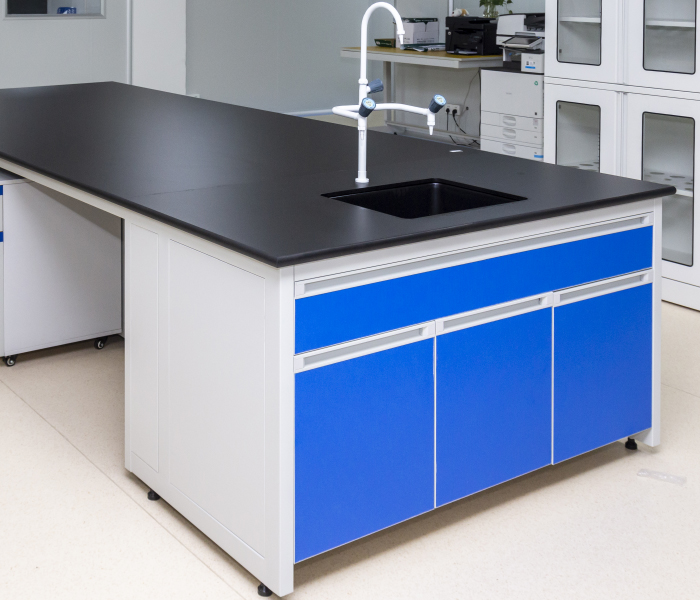Table of Contents
Lab Benching Systems for High-Traffic Laboratories: Durability Meets Functionality
In the bustling world of modern scientific research and industrial production, high-traffic laboratories face unique challenges. The constant flow of personnel, heavy equipment, and intensive experiments demand lab furniture that can withstand the rigors of continuous use. This article delves into the critical aspects of selecting, maintaining, and optimizing lab benching systems for these demanding environments.
The High-Stakes World of Busy Labs
Identifying High-Traffic Laboratory Environments
Production Laboratories: Where high-volume testing and manufacturing processes occur around the clock.
Large Academic Institutions: University labs serving hundreds of students and researchers daily.
Contract Research Organizations (CROs): Facilities handling diverse projects with quick turnarounds.
Government Research Facilities: Labs supporting multiple agencies and long-term studies.
Pharmaceutical Quality Control Labs: Where consistent, high-volume testing is paramount.
These environments require heavy-duty lab furniture that can handle the pressure without compromising safety or efficiency.
Essential Features of Durable Lab Bench Systems
When it comes to high-traffic lab benches, durability is non-negotiable. Here are the key features that set apart robust lab benching systems:
Reinforced Frames
- Steel Tube Construction: Providing superior strength-to-weight ratio.
- Welded Joints: Offering enhanced stability compared to bolt-together systems.
- Powder-Coated Finishes: Ensuring resistance to chemicals and scratches.
Durable Countertops
- Phenolic Resin: Lightweight yet incredibly durable, resistant to most chemicals.
- Epoxy Resin: Seamless surfaces that withstand harsh chemicals and high temperatures.
- Stainless Steel: Ideal for labs requiring frequent sanitization and heavy load-bearing capacity.
Heavy-Duty Supports
- Adjustable Leveling Feet: Capable of supporting tons of weight while allowing for uneven floors.
- Reinforced Leg Systems: Designed to minimize vibration and maintain stability.
- Under-Bench Support Bars: Providing additional structural integrity for heavy equipment placement.
Modular Design
- Reconfigurable Units: Allowing labs to adapt to changing needs without replacing entire systems.
- Standardized Dimensions: Ensuring compatibility with a wide range of lab equipment and accessories.
Integrated Services
- Built-in Electrical Outlets: Strategically placed to reduce trip hazards from cords.
- Plumbing and Gas Lines: Incorporated into the bench design for safety and efficiency.
- Data Ports: Ensuring seamless connectivity for modern lab equipment.
Maintaining Lab Bench Systems Under Pressure
Even the most durable lab benches for busy labs require proper maintenance to ensure longevity and performance:
Regular Inspections: Schedule weekly checks for signs of wear, loose fittings, or structural issues.
Proactive Repairs: Address minor damages immediately to prevent escalation.
Proper Cleaning Protocols: Use appropriate cleaning agents that won’t degrade surfaces or compromise chemical resistance.
Load Management: Educate staff on weight limits and proper distribution of heavy equipment.
Vibration Mitigation: Implement strategies to minimize equipment vibration transfer to bench surfaces.
Surface Protection: Use sacrificial mats or covers in high-wear areas to extend countertop life.
Best Practices for Choosing High-Traffic Lab Benches
Selecting the right bench system for a busy lab environment is crucial. Consider these factors:
Assess Current and Future Needs: Plan for growth and changing research focuses.
Analyze Traffic Patterns: Design layouts that optimize workflow and reduce congestion.
Consider Equipment Specifications: Ensure benches can support the weight and utility requirements of all lab equipment.
Evaluate Chemical Resistance: Match countertop materials to the specific chemicals used in your lab.
Prioritize Ergonomics: Choose adjustable options to accommodate various users and tasks.
Check Compliance: Ensure all components meet relevant safety and industry standards.
Calculate Total Cost of Ownership: Factor in longevity, maintenance, and potential downtime when comparing options.
Case Study: Transforming a University Research Hub
The University of Innovate Sciences recently overhauled its central research facility, which serves over 500 students and researchers daily. They implemented a new lab benching system with the following results:
- 50% reduction in maintenance calls related to bench issues
- 30% increase in usable bench space due to efficient modular design
- 25% improvement in user satisfaction ratings
- 40% decrease in downtime due to furniture-related issues
By investing in high-quality, durable lab bench systems, the university not only improved its research capabilities but also realized significant cost savings in the long run.
The Future of High-Traffic Lab Benches
As laboratories continue to evolve, so too will the demands on lab furniture. Emerging trends include:
- Smart Benches: Integrated sensors for monitoring usage and predictive maintenance.
- Sustainability: Eco-friendly materials and energy-efficient integrated systems.
- Extreme Customization: 3D-printed components for unique lab requirements.
- Antimicrobial Surfaces: Advanced materials that inhibit bacterial growth.
Conclusion: Investing in the Foundation of Scientific Progress
In the fast-paced world of high-traffic laboratories, the right benching system is more than just furniture—it’s the foundation upon which scientific progress is built. By choosing durable, adaptable, and intelligently designed lab benches, facilities can ensure they’re equipped to handle the demands of today’s research while being prepared for the challenges of tomorrow.
Remember, in a busy lab, every second counts. Make sure your benches can keep up with the pace of discovery.




